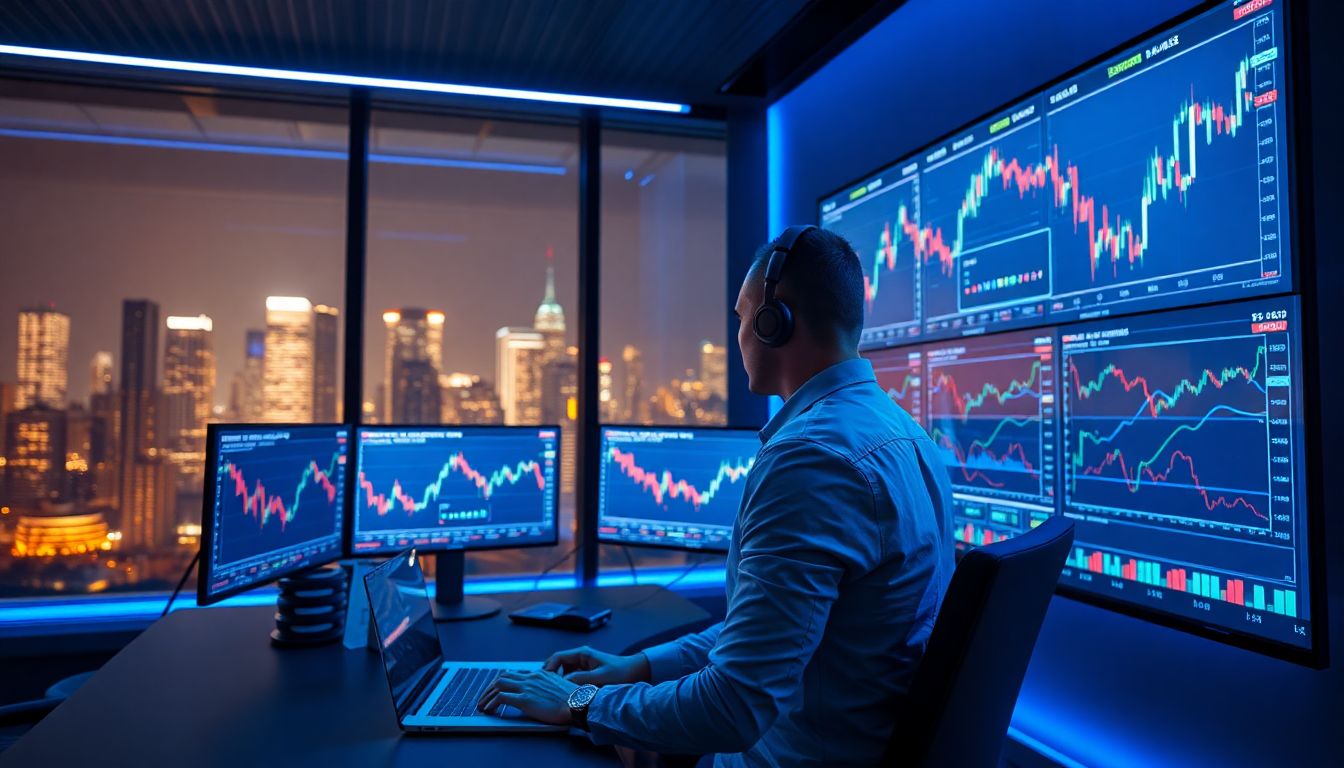Contents
Automated Forex Trading: Pros, Cons, and How to Get Started
Introduction
Automated forex trading is changing the way people trade currencies. More traders are using software to buy and sell, instead of doing everything manually. Automation makes trading faster and can help eliminate common mistakes. But before jumping in, it’s crucial to know both the benefits and risks. Understanding these points helps you make smarter choices and avoid costly errors.
What Is Automated Forex Trading?
Definition and Core Concepts
Automated forex trading uses computer programs or robots to execute trades. These systems follow rules set by traders or developers. The most common tools are called forex robots or algorithmic trading systems. They analyze market data and place trades automatically based on pre-set signals.
Types of Automated Trading Systems
- Expert Advisors (EAs) and Trading Bots: These are ready-made programs you attach to trading platforms like MetaTrader. They scan the markets and trade based on set rules.
- Custom vs. Pre-built Solutions: Some traders buy or download ready systems, while others develop strategies tailored to their goals. Creating custom algorithms needs programming skills but can give a competitive edge.
Brief Historical Context
Trading used to mean sitting in front of screens all day, manually making decisions. As computers improved, programmers built systems that could trade faster and more efficiently. Over the years, automated trading grew from hobbyist ideas to a major part of Wall Street and hedge funds’ strategies.
Advantages of Automated Forex Trading
Increased Speed and Efficiency
Automation lets you trade instantly when signals appear. Human traders can’t react as fast, which puts them at a disadvantage. Big firms, like hedge funds, rely heavily on automation for quick decisions and big trades.
Removes Emotional Bias
Humans can get scared or greedy, messing up trades. Automated systems follow rules without emotion, making decisions based on data. Studies show emotional trading often causes losses, making automation a smarter choice.
24/7 Market Monitoring
Since computers don’t sleep, systems can watch markets around the clock. They can enter or exit trades during nights and weekends. A quick tip: set alerts to see how your system performs in different conditions.
Backtesting and Strategy Optimization
You can test your strategies on past data before risking real money. Backtesting shows how your system would have performed historically. It helps spot weaknesses and tweak strategies before live trading. Many professional algorithmic traders swear by this step.
Accessibility for All Traders
Even beginners can start automated trading with small accounts. Software and platforms are affordable and easy to use. This levels the playing field for amateur traders who don’t have big capital or years of experience.
Disadvantages and Risks of Automated Forex Trading
Technical Failures and Glitches
No software is perfect. Bugs, slow internet, or crashes can cause losses. For example, a system crash during high volatility can lead to missed trades or unexpected moves. Always keep a backup plan ready.
Over-Optimization and Curve Fitting
Some strategies work well in testing but fail in real life. This is called over-optimization, or “curve fitting.” The system is tuned specifically for past data but struggles with current markets. Regularly review and update your algorithms to stay effective.
Market Conditions and Limitations
Algorithms can struggle with sudden market jumps or flash crashes. These extreme events often cause models to perform poorly or make wrong trades. They can’t see surprises coming from nowhere.
Dependence on Software and Data Quality
A reliable data feed and well-coded software are vital. Faulty data can lead to incorrect signals, and poor software might crash. Always test your systems thoroughly before trading live.
Potential for Losses and Overtrading
High-frequency trading can eat into your profits with fees and fast losses. Automated systems may trade too much, risking more money than intended. Always set limits to protect yourself from overtrading.
How to Get Started with Automated Forex Trading
Choosing the Right Platform and Software
Look for platforms that are safe and easy to use. Popular options include MetaTrader 4/5 and cTrader. Consider factors like programming support, customer service, and community reviews before picking one.
Developing or Selecting a Trading Strategy
Start with simple rules. For example, buy when prices rise 20 pips and sell when they drop 20 pips. Use online forums, tutorials, or hire programmers to help craft better strategies. Focus on creating systems that suit your risk tolerance.
Backtesting and Demo Trading
Test your system on historical data first. Then, try it in a demo account using virtual money. This helps you see how it performs without risking real cash. Only move to live trading after consistent, positive results.
Managing Risk and Setting Parameters
Use tools like stop-loss orders and take-profit targets to control losses. Keep your position sizes small when starting out. This way, mistakes won’t be costly and you can learn as you go.
Transitioning to Live Trading
When ready, start with a small live account. Closely monitor your system’s decisions and performance. Adjust settings as needed. Always keep a close eye to prevent big surprises.
Legal and Ethical Considerations
Check local laws about automated trading. Ensure your software complies with regulations. Transparency and honesty are key to avoiding legal trouble.
Conclusion
Automated forex trading offers many benefits like faster trades, emotional control, and easy backtesting. But it also comes with risks, such as technical glitches and market surprises. Education, testing, and good risk management are essential.
If you’re interested in automation, start with a demo account. Use trusted platforms and tools. Keep reviewing and refining your strategies. Remember, automated trading works best as a tool to support your manual analysis, not replace it.
Approach it wisely, and automation can help improve your trading results over time.
